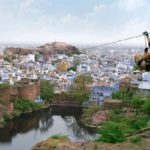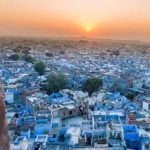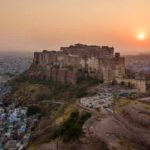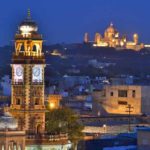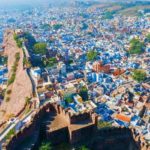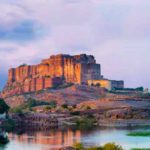Top 8 Places To Visit In Jodhpur is known as the ‘Blue City,’ the ‘Sun City,’ and the ‘Gateway to Thar,’ among other nicknames. However, since the old houses are painted blue, Jodhpur is commonly referred to as “Blue City.” Jodhpur is a tourist destination known for its magnificent forts, palaces, temples, and, of course, picturesque views, which are set in the unmistakable landscape of the Thar Desert.
In addition, the city has charming streets and lanes that take you to a bygone era. From authentic shops that highlight Rajasthan’s intricate artwork to roadside food stalls known for their mouth-watering local dishes, Top 8 Places To Visit In Jodhpur is known for everything. However, it is a little out of the way from the new Jodhpur area The old city encircles the Mehrangarh Fort, which is surrounded by solid walls and gates.
This venue has its own distinctive beauty that visitors adore. Supposedly, the elegance of this location has also attracted the film industry. The city is featured in a few scenes in films such as The Dark Knight, Hum Saath Saath Hain, The Autobiography of a Princess, and others, Increasing the popularity of Jodhpur’s tourist attractions. To be honest, the amount of attractions it houses makes visiting all of them in one trip difficult. To make it easier for you, we’ve compiled a list of the Top 8 Places To Visit In Jodhpur (which we know you’ll love): –
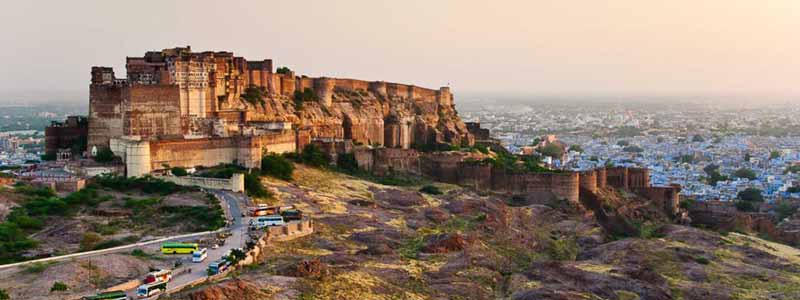
Mehrangarh Fort
From the hilltop, majestic Mehrangarh, one of Rajasthan’s finest forts, looks down protectively on the area. The fort is located at a height of about 125 metres and covers a total area of 5 square kilometres, with seven gates. The short, not-too-steep hill could be driven up or walked to the top. The sheer rock face from which the tall and huge sandstone wall of Mehrangarh rises, whether viewed from a car or on foot, looks amazing.
The Mehrangarh Fort is located in the heart of the city, at an altitude of about 125 metres. It covers a 5-square-kilometer area. The fort has seven gates, the most notable of which is the Jayapol, which was designed by Maharaja Man Singh in 1806; Maharaja Ajit Singh designed the Fatehpol, or Victory Gate, and the Lohapol, or Iron Gate. The sati marks of Maharaja Man Singh’s widows who threw themselves onto his funeral pyre in 1843 can be seen next to the Lohapol. The strategically placed cannons can be seen on the wall.
A series of courtyards and palaces welcome visitors inside the fort. The palace apartments house a magnificent array of Indian royal accoutrements. Thousands of tourists visit the fort each year to see the Rajput warriors’ artillery device. From the fort, one can get a bird’s eye view of the area Top 8 Places To Visit In Jodhpur.
From the hilltop, majestic Mehrangarh, one of Rajasthan’s finest forts, looks down protectively on the area. The fort is located at a height of about 125 metres and covers a total area of 5 square kilometres, with seven gates. The short, not-too-steep hill could be driven up or walked to the top. The sheer rock face from which the tall and huge sandstone wall of Mehrangarh rises, whether viewed from a car or on foot, looks amazing.
In front of Mehrangarh Fort’s wide gate, A bearded Jodhpur resident dressed in traditional threads, complete with turban, sword, shield, and hookah, welcomes visitors. A couple of local musicians can also be found singing to the tunes of the region. I purchased the required tickets and set out to explore the palaces, hallways, and courtyards of Mehrangarh.
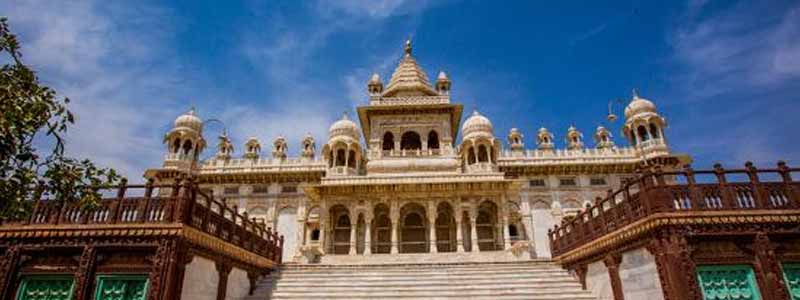
Jaswant Thada
The Jaswant Thada, a beautiful marble memorial to Maharaja Jaswant Singh II, is situated on the main road from Jodhpur to Meherangarh Fort. The Jaswant Thada counterbalances Meherangarh fort’s strong, imposing exterior with some of Rajasthan’s most delicate and ornate marble carving. Many visitors to Jodhpur simply walk past the Jaswant Thada memorial after either being too exhausted or not understanding the splendour concealed inside Meherangarh fort.
Sardar Singh designed the Jaswant Thada in 1899 to commemorate his father, Jaswant Singh II, who died in 1895. The site has since been the maharajas of Jodhpur’s burial ground and memorial, with each maharaja having a white marble tomb in the central building. One of the complex’s unusual memorials is dedicated to a peacock that flew into the funeral pyre when the maharaja’s body was being cremated. Jalis are intricate marble lattice screens that hang over the walls.
The complex is open from 9:00 a.m. to 17:00 p.m., with a Rs30 entrance fee (plus Rs25 for a camera). The grounds of the Jaswant Thada are meticulously maintained, with multi-tiered levels and carved gazebos. The gardens are a wonderful place to take pictures of Meherangarh Fort or relax in the shade of a tree. A small lake with waterfowl and a variety of birds is also located within the gardens. After a day of scorching heat and aridity, the lake is a welcoming sight.
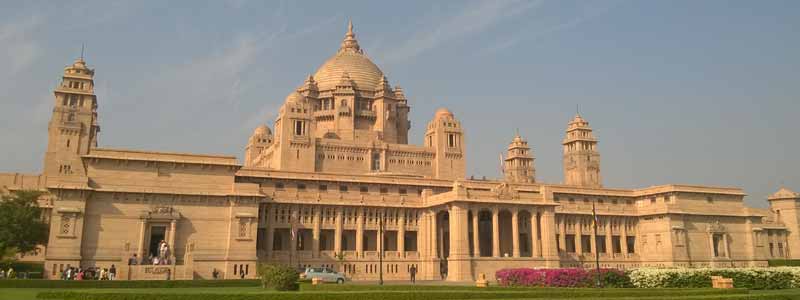
Umaid Bhawan Palace
Jodhpur, Rajasthan’s second largest district, is also known as “the Sun City” and “the Blue City.” It is also the capital of the Marwar kingdom. Jodhpur’s royal history is reflected by a variety of palaces, forts, and ancient tradition and culture. The Umaid Bhawan Palace is one of Jodhpur’s most popular tourist attractions.
Maharaja Umed Singh is the name of the palace, who is the current owner of the palace’s grandfather The palace was once known as the ‘Chittar palace,’ due to its location on Chittar hill (the highest point Jodhpur). The Umaid Bhawan Palace in Jodhpur is a brilliant architectural marvel that features a wonderful mix of Rajput and Victorian styles.
Maharaja Umed Singh demolished the palace on November 18th, 1929, and construction continued until 1944. It was later built in order to provide jobs to the area’s poor and unemployed. With 347 rooms, the Palace is one of the world’s largest private residences. The Maharaja of Jodhpur, Gaj Singh, is the current owner of the palace. The Maharaja’s royal residence, a museum, and a heritage hotel are the three main sections of the palace.
The museum has a wide collection of arms, as well as a banner presented by Queen Victoria and incredible clocks that provide comprehensive details about Rajasthan’s royal age.
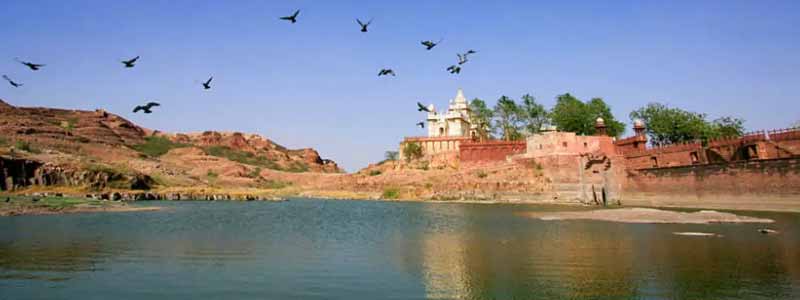
Balsamand Lake
The lakes and forts of Rajasthan’s kingly state are its highlights, and the Balsamand Lake is one of them. Balsamand Lake is one of the most beautiful and clean lakes in the entire state of Arizona. The Balsamand Lake is situated in Jodhpur. This broad lake is surrounded by a hilly landscape that is covered in arid yet dense vegetation. Many of the tours offered by Jodhpur tourism are centred on the city of Jodhpur A visit to this serene lake view is not complete without a banner. Aside from that, the Balsamand Lake Palace, which is situated next to the lake, is an ethnic wonder.
The historical significance of this lake is also deeply rooted in the Rajput Dynasty’s flourishing. The Gurjara Pratihara tribe controlled this area in the thirteenth century CE. The then-king of the realm constructed this artificial lake to meet the water needs of the common people. The clan was so taken with the lake’s exquisite scenic beauty, heavenly ambience, and naturally guarded terrain that they decided to make it their capital and founded the Balsamand Lake Palace by the lake.
The Balsamand Lake and Palace are two of the most popular tourist attractions in Jodhpur. This lake, which is located on the Jodhpur-Mandore route, is very open to travellers. This location’s well-kept gardens, groves of various fruits such as mango, guava, plum, and pomegranate, and sightings of various birds and animals make it very appealing. Photography, horseback riding, a palatial heritage tour, and a number of other enjoyable activities are available here.
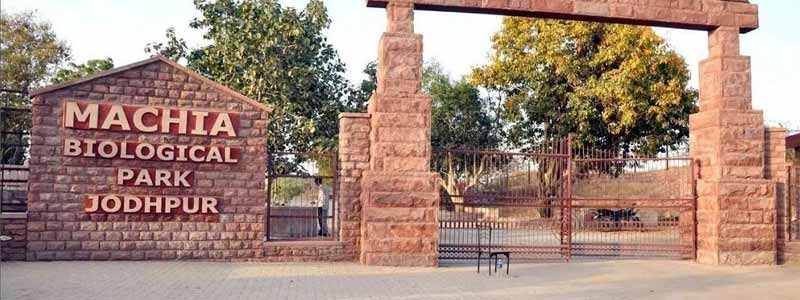
Machiya Safari Park
Machiya Safari Park is located on the road between Jodhpur and Jaisalmer. It’s in the Machiya forest block, near Kaylana Lake, on the outskirts of the hills. It is a biological safari park that is home to a number of species. The park was built with the primary goal of preserving endangered species and conserving the flora and fauna.
The park spans 41 hectares, with a zoo built into one section is a re-opening of the former zoo in the Public Park. Machiya Safari Park is home to a variety of wild animals, including tigers, lions, and leopards, as well as Indian gazelles, blackbucks, axis deer, hyenas, foxes, wild cats, lizards, monkeys, rabbits, blue bulls, and Indian wolves. In addition, the zoo has a veterinary facility where the animals are cared for.
Machiya Safari Park is a fun place for school kids to visit; educational tours are organised to educate students about wild animals, endangered species, and the importance of wildlife conservation. It’s also a perfect location for bird watchers, as there’s a fort in the park that provides a stunning view of the sunset. The safari park is close to man-made bodies of water, This area includes Kaylana Lake, Takhatsagar Lake, and Akheraj Lake, making it one of the most popular tourist destinations. Elephant rides, which provide tourists with a panoramic and informative view of the safari park, are the main attractions in the safari park.
Restrooms, washrooms, a restaurant, and parking are among the park’s other amenities. Except on Tuesdays, the park is open all year from 8 a.m. to 5 p.m. in the winter and 8 a.m. to 6 p.m. in the summer. The Safari Park is a must-see for wildlife enthusiasts.
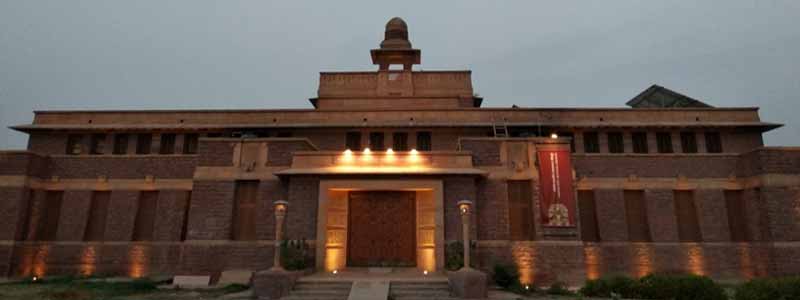
Jodhpur Government Museum
Jodhpur’s Sardar Government Museum Sardar Government Museum should be one of the top reasons for visitors to fly to Jodhpur if they want to learn more about the city’s rich history and culture. The Government Museum, named after Maharaja Sardar Singh of Jodhpur, is situated in the heart of the Ummaid Bagh.
The ancient museum, which was built during Maharaja Ummaid Singh’s reign in 1909, houses a diverse collection of textiles, stone sculptures, miniature portraits, arms, and local arts and crafts. Aside from the wonderful collection of collectibles, the museum also has photographs and manuscripts of well-known Jain Tirthankaras.
The museum’s architecture, despite having survived a century, feels charmingly frozen in time. A renowned Edwardian architect was responsible for the museum’s architectural genius. The museum’s interior is divided into different parts, which house military plane models and battleships in addition to the normal antiques from Jodhpur’s history. The Sardar Government Museum is one of Jodhpur’s most famous attractions because of its description and collection.
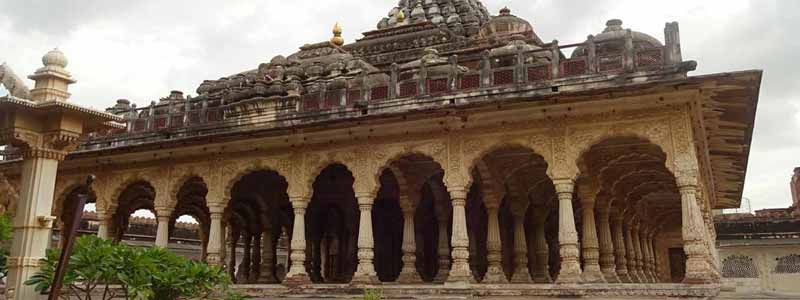
Mahamandir Temple
Mahamandir Temple is a sacred site in the city of Jodhpur. Explore the Mahamandir Temple’s architectural wonder and the ruins that surround it. This historic Shiva temple, located just 2 kilometres outside of town on the road to Mandore, is a great place to enchant your spiritual side. This 84-pillared temple, which was built in 1812, proudly displays lovely stone carvings depicting yogic postures, Inside its walls are intricate pillar motifs and various works of art.
Though it is likely to be difficult to find due to the labyrinth of slender alleys that lead to Mahamandir Temple, the temple’s brilliant artwork and carvings make the difficulty seem worthwhile. If you have a good manual or a competent person with you, you can do better. It’s surprising that the temple is in such bad shape given its magnificent architecture; however, since it doesn’t appeal to the typical tourist, loners and wanderers may find a refuge here.
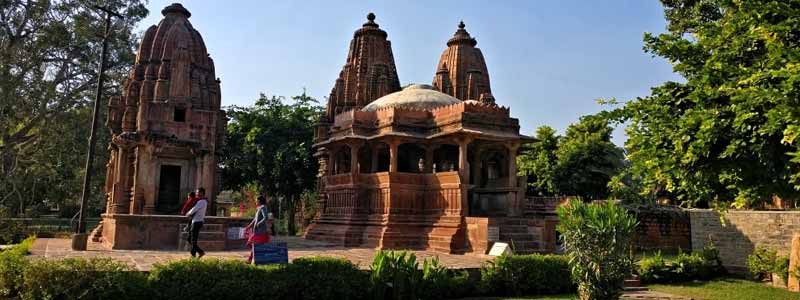
Mandore Gardens
Mandore is about a 5-mile drive north of Jodhpur. It was the Maharajas of Marwar’s former capital. It was later abandoned due to security concerns about the Mehrangarh fort. It is a popular local attraction because of its extensive Mandore garden, which features a high rock terrace. Tourists will visit the garden from 8 a.m. to 8 p.m.
The dewals, or cenotaphs, of Jodhpur’s former rulers can be found in the Mandore garden. The cenotaphs of the famous Mandore garden in Jodhpur, Rajasthan, are constructed along the lines of a Hindu temple, rather than the traditional chhatri-shaped cenotaphs of Rajasthan. They are four stories tall, with fine red sandstone columns and an elegant spire. Maharaja Ajit Singh’s dewal is the most impressive of all. These cenotaphs are surrounded by beautiful gardens. The Maharani’s cenotaphs are located on a rocky outcropping above the hill.
The hall of heroes is located near the cenotaphs. Various deities and Rajput folk heroes are honoured in this hall. We made the statues of the gods and heroes out of rock and painted them in vibrant colours. “The Temple of the Three Hundred Million Gods,” also in Jodhpur’s garden, is packed with brightly coloured pictures of Hindu gods. As you ascend the hill, you will reach Mandore, a ruined city with an old palace.

